I have a newfound passion, and that’s Purple Martins.
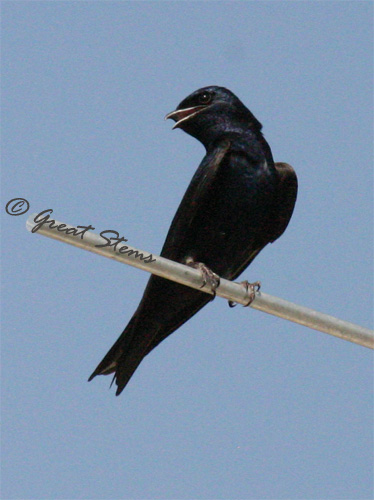 Purple Martins are the largest North American swallow, and they share a special relationship with humans — those birds living east of the Rockies, for example, are completely dependent on humans for housing. This history starts long ago with Native Americans setting out gourds to attract the PMs, which in turn offered alerts to snakes and other dangers. Today, because invasive English House Sparrows and European Starlings aggressively compete for natural cavities, the Eastern Purple Martins fully shifted to human-made housing. However, House Sparrows and Starlings try to occupy these as well, so it’s important that humans actively manage the housing to keep out the aggressive species.
Purple Martins are the largest North American swallow, and they share a special relationship with humans — those birds living east of the Rockies, for example, are completely dependent on humans for housing. This history starts long ago with Native Americans setting out gourds to attract the PMs, which in turn offered alerts to snakes and other dangers. Today, because invasive English House Sparrows and European Starlings aggressively compete for natural cavities, the Eastern Purple Martins fully shifted to human-made housing. However, House Sparrows and Starlings try to occupy these as well, so it’s important that humans actively manage the housing to keep out the aggressive species.
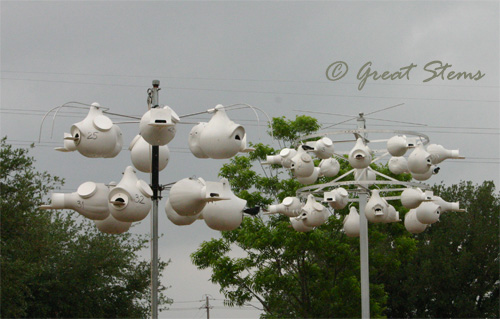 Yesterday, we had the pleasure of participating in nest checks down at Hornsby Bend with Andy and Julia, the landlords of the Purple Martin gourds there. What all do PM landlords do? They help ensure the success of Purple Martin nests by evicting House Sparrows and Starlings, keeping the housing systems in shape, providing pine straw or other nesting material, monitoring egg and young counts, providing protection from predators, replacing mite-infested nests, closing housing after migration, and cleaning and reopening housing in late winter for the next PM season.
Yesterday, we had the pleasure of participating in nest checks down at Hornsby Bend with Andy and Julia, the landlords of the Purple Martin gourds there. What all do PM landlords do? They help ensure the success of Purple Martin nests by evicting House Sparrows and Starlings, keeping the housing systems in shape, providing pine straw or other nesting material, monitoring egg and young counts, providing protection from predators, replacing mite-infested nests, closing housing after migration, and cleaning and reopening housing in late winter for the next PM season.
As you view these photos, remember that Purple Martins have a unique relationship with humans which enables landlords to keep a close eye on the health of the birds. Please don’t handle other bird species’ nests, eggs, hatchlings, or fledglings you have at home. However, if you find a fallen fledgling, it’s okay to try to put it back into or near the nest, disturbing the nest or family as little as possible.
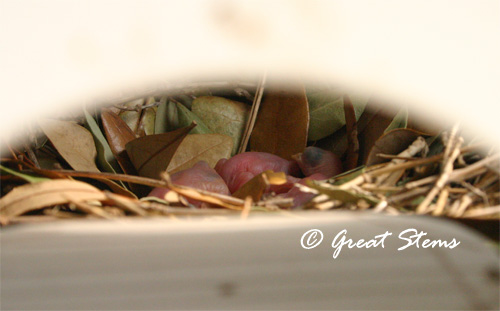
The Purple Martin young at Hornsby Bend were in different stages of development, from egg to about 11-13 days old. Many were newly hatched.
Here are the eggs of one nest — their solid-looking appearance indicates that hatching time is near.
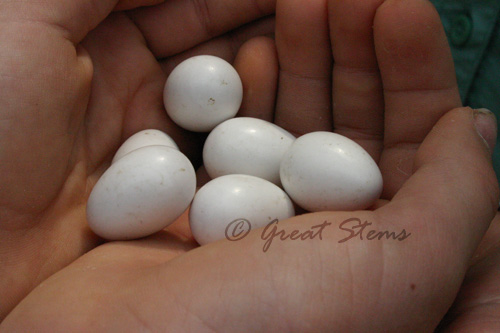 When the babies hatch, they are tiny and featherless, and they have closed eyes and a transparent belly.
When the babies hatch, they are tiny and featherless, and they have closed eyes and a transparent belly.
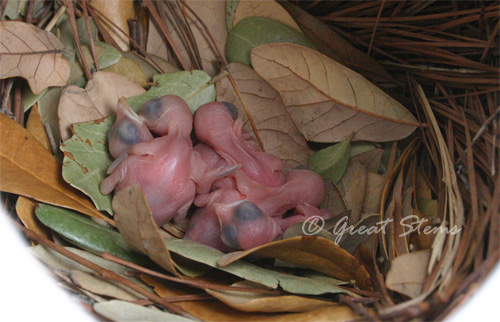 You can the see the yolk sac here, which the baby will use for additional nutrients in addition to the insects the parents provide.
You can the see the yolk sac here, which the baby will use for additional nutrients in addition to the insects the parents provide.
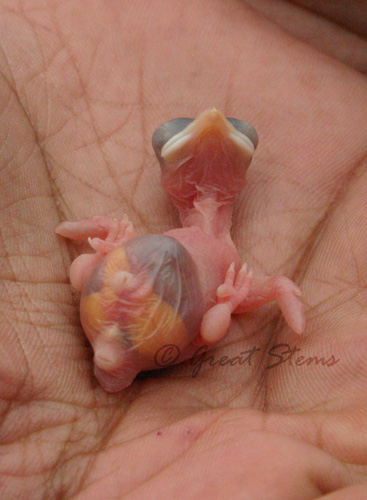
In just a few days, the babies’ skin darkens, and they start to grow feathers.
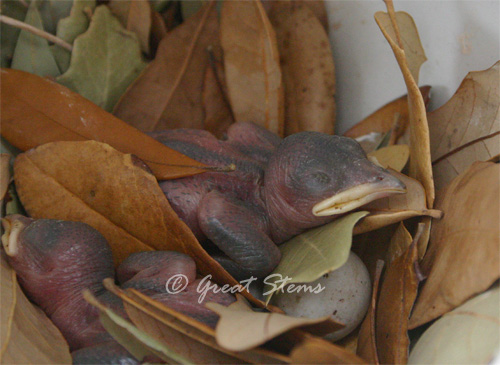
These babies are about 5 days old, with visible feather tracts , darkened skin, and pin feathers beginning to show. Their eyes are just hinting at starting to open — if you look closely, you can see the slits.
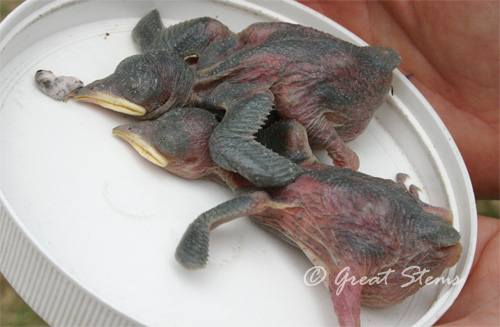 Over the next few days, the eyes will fully open and the pin feathers will emerge even farther.
Over the next few days, the eyes will fully open and the pin feathers will emerge even farther.
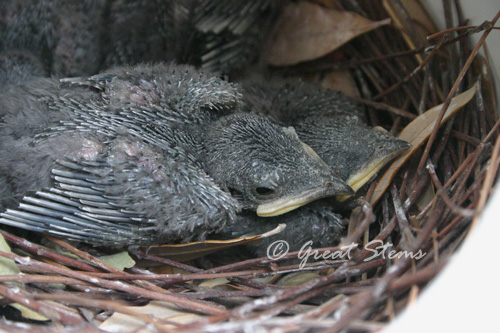
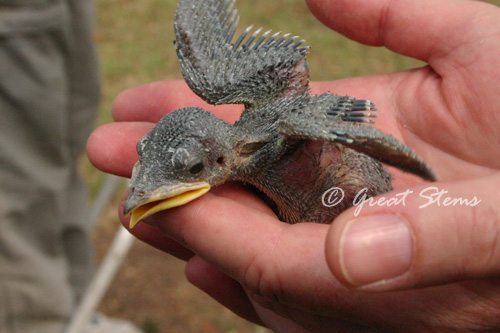
Pretty soon they actually start to look like birds, though my first thought when I saw this picture was that someone had stuck a Lost-World Pteranadon in the nest. I guess that mouth gets big fast to take on bigger insects.
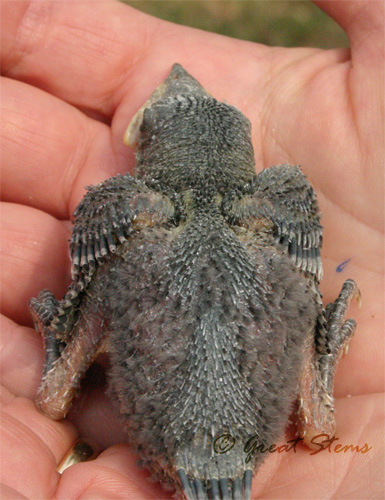
To determine the age of some of the babies, we compared them to a set of photo charts. The babies of this nest are likely 11 days old, based on this one’s feather development and size. Its tail feathers are just now emerging from their sheaths.
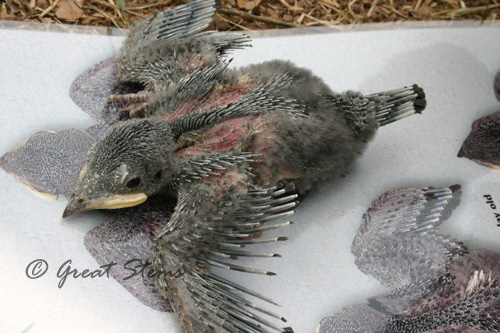
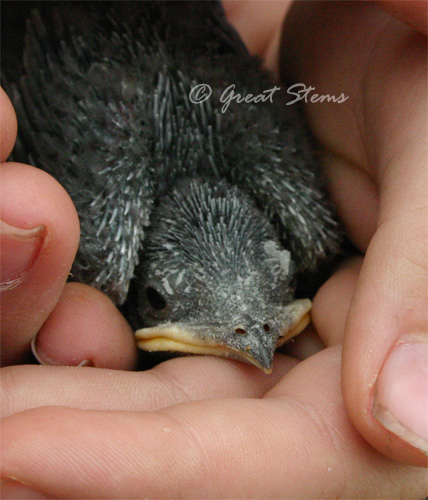 It was Hatching Day in one nest, and this was soooooo exciting.
It was Hatching Day in one nest, and this was soooooo exciting.
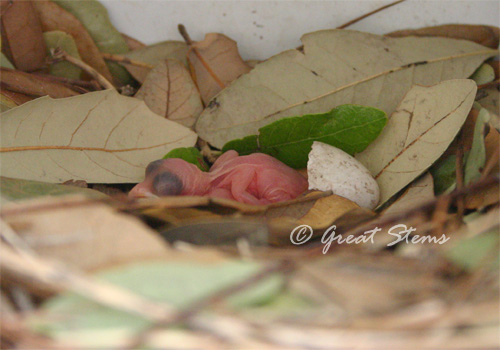
This little baby is still wearing its egg “diaper.”
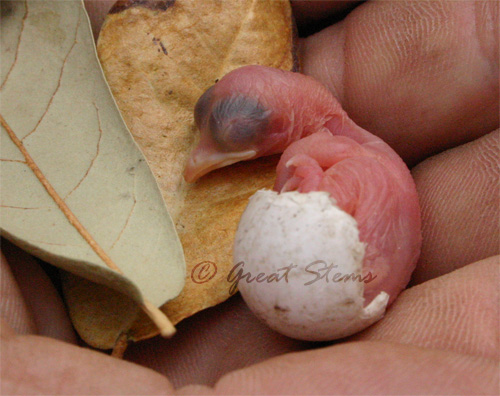
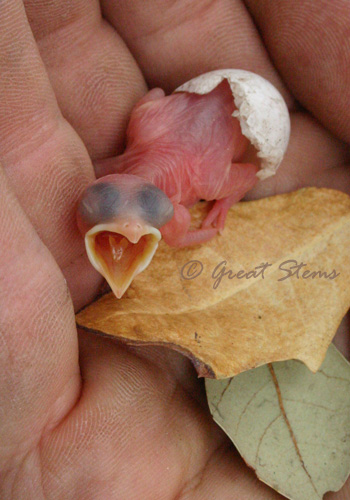
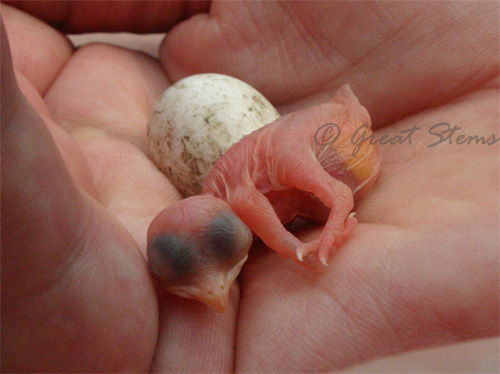 The other three eggs in the same nest were getting ready to hatch — we could feel movement inside the eggs, and the joy of it was beyond words.
The other three eggs in the same nest were getting ready to hatch — we could feel movement inside the eggs, and the joy of it was beyond words.
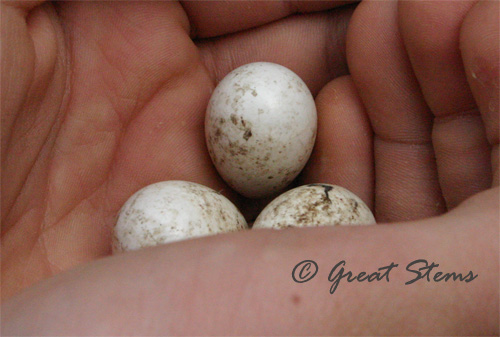 As heart-thrilling as the whole experience was for me, the best part was watching my almost-eleven-year-old son help count and determine the age of the birds, as well as getting to feel the tiny movements of the soon-to-hatch eggs. He was clearly moved by the whole experience, and he’s eager to go back to help Andy and Julia. By the way, we’re actually PM managers ourselves — we’re helping to get the Purple Martin colony established in the new gourds at my son’s school. I can’t wait to have a full colony of Purple Martins there!
As heart-thrilling as the whole experience was for me, the best part was watching my almost-eleven-year-old son help count and determine the age of the birds, as well as getting to feel the tiny movements of the soon-to-hatch eggs. He was clearly moved by the whole experience, and he’s eager to go back to help Andy and Julia. By the way, we’re actually PM managers ourselves — we’re helping to get the Purple Martin colony established in the new gourds at my son’s school. I can’t wait to have a full colony of Purple Martins there!
To find out how you can help protect Purple Martins and whether your site is a good place to set up PM housing, be sure to visit the Purple Martin Conservation Association for a tremendous amount of information.
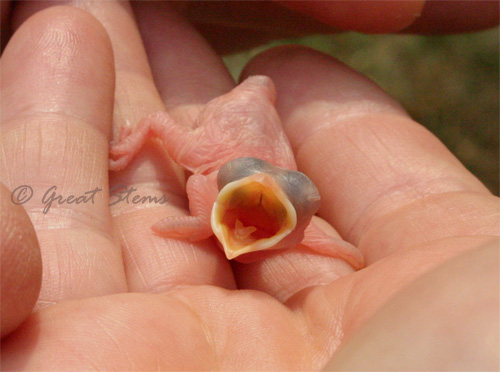 Oh, and… chirp! (see title)
Oh, and… chirp! (see title)
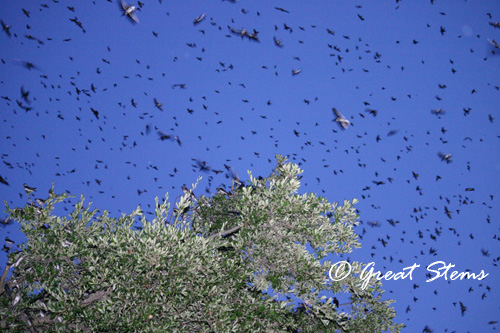
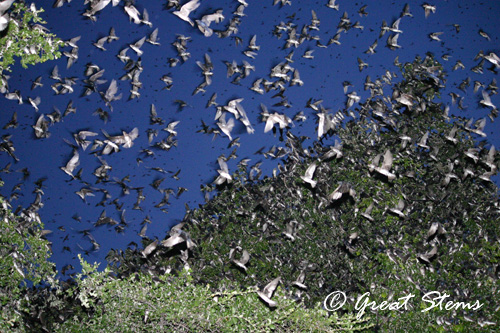
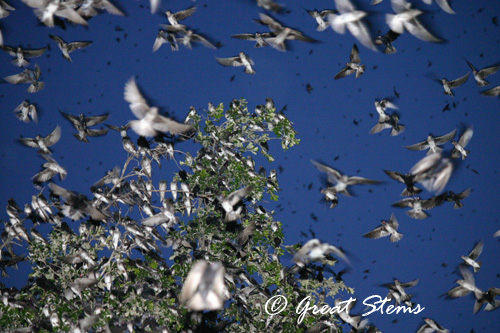
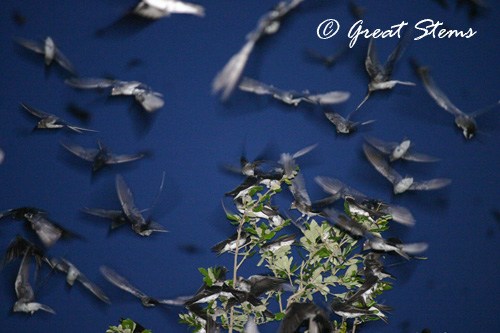
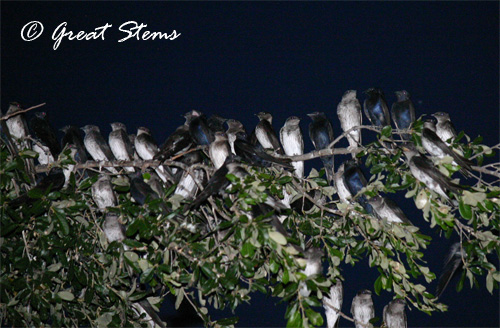 Just look at how many birds eventually gather together on each branch! It amazes me the trees manage to stay upright under all that weight.
Just look at how many birds eventually gather together on each branch! It amazes me the trees manage to stay upright under all that weight.






 Over the next few days, the eyes will fully open and the pin feathers will emerge even farther.
Over the next few days, the eyes will fully open and the pin feathers will emerge even farther.



 It was Hatching Day in one nest, and this was soooooo exciting.
It was Hatching Day in one nest, and this was soooooo exciting.




